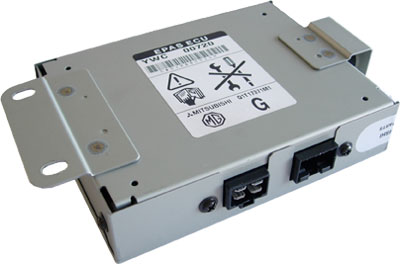Realtime live display of the information the electronic control unit of the selected vehicle system is currently deriving from its input sensors.
In order to read the real values for these inputs, engine idling and fully warm, neutral selected and handbrake on are required.
- Sub torque (V):This is the voltage supplied to the main torque sensor. Expected values should be in the range 1V to 4V, normal value being around 2.5V.
- Sub torque (Nm):The main torque sensor is mounted together with the sub torque sensor on the steering column and measure the amount of torque that is applied to the steering wheel. The sensor in conjunction with the sub torque sensor is used as a means of detecting when steering assistance is required. If the difference in the values becomes greater then 6% then it is considered that there is a fault and EPAS assistance is withdrawn.
- Sub torque (V):This is the voltage supplied to the sub torque sensor. Expected values should be in the range 1V to 4V, normal value being around 2.5V.
- Sub torque (Nm):The sub torque sensor is mounted together with the main torque sensor on the steering column and measure the amount of torque that is applied to the steering wheel. The sensor in conjunction with the main torque sensor is used as a means of detecting when steering assistance is required. If the difference in the values becomes greater then 6% then it is considered that there is a fault and EPAS assistance is withdrawn.
- Torque sensor supply:This is the voltage supplied to the torque sensor. Expected values should be in the range 8.4V to 13.7V.
- Target current (A):Target current value calculated by the ECU. This value is compared with the observed current. The values vary depending on the amount of torque applied to the steering wheel and the level of assistance the motor is currently providing. Values should range from 0.0A to a maximum of 39.5A
- Observed Current (A):This is the current observed. This value is compared with the target current calculated by the ECU. The values vary depending on the amount of torque applied to the steering wheel and the level of assistance the motor is currently providing. Values should range from 0.0A to a maximum of 39.5A
- EPAS assistance (%):This displays the amount of assistance the EPAS motor is applying.
- Vehicle speed (Km/h):This is the vehicle speed in km/h. The signal is supplied to the EPAS ECU from a reed switch that is located in the speedometer assembly and is used to determine how much assistance should be applied to the steering column. This signal will only be present if the speedometer is functioning correctly.
- Vehicle speed (mph):This is the vehicle speed in mph.
- Engine speed (RPM):This is the engine speed signal, supplied to the EPAS ECU from the engine management ECU. In the case of the vehicle speed signal failing the engine speed is used as a fail safe to shut down the EPAS system.
|
 EPAS (MG) - System Overview
EPAS (MG) - System Overview EPAS (MG) - Known Fitments
EPAS (MG) - Known Fitments EPAS (MG) - Physical Details
EPAS (MG) - Physical Details
 EPAS - Pin Outs
EPAS - Pin Outs
